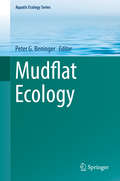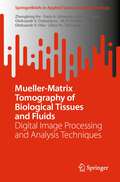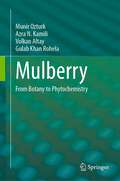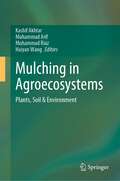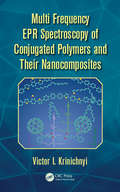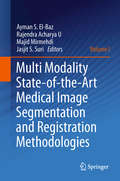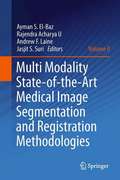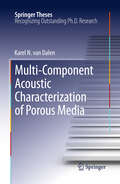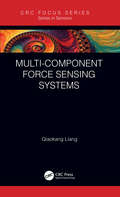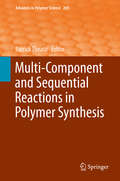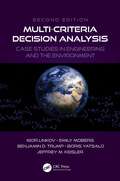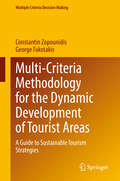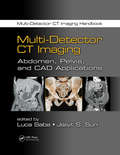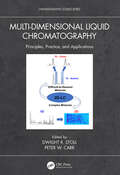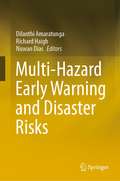- Table View
- List View
Muddy Thinking in the Mississippi River Delta: A Call for Reclamation
by Ned RandolphA free ebook version of this title is available through Luminos, University of California Press's Open Access publishing program. Visit www.luminosoa.org to learn more.Muddy Thinking in the Mississippi River Delta uses the story of mud to answer a deceptively simple question: How can a place uniquely vulnerable to sea level rise be one of the nation's most promiscuous producers and consumers of fossil fuels? Organized around New Orleans and South Louisiana as a case study, this book examines how the unruly Mississippi River and its muddy delta shaped the people, culture, and governance of the region. It proposes a framework of "muddy thinking" to gum the wheels of extractive capitalism and pollution that have brought us to the precipice of planetary collapse. Muddy Thinking calls upon our dirty, shared histories to address urgent questions of mutual survival and care in a rapidly changing world.
Mudflat Ecology (Aquatic Ecology Series #7)
by Peter G. BeningerIntertidal mudflats are distinct, highly-productive marine habitats which provide important ecosystem services to the land-sea interface. In contrast to other marine habitats, and despite a large body of primary scientific literature, no comprehensive synthesis exists, such that the scattered knowledge base lacks an integrated conceptual framework. We attempt to provide this synthesis by pulling together and contextualizing the different disciplines, tools, and approaches used in the study of intertidal mudflats. The editor pays particular attention to relationships between the various components of the synthesis, both at the conceptual and the operational levels, validating these relationships through close interaction with the various authors.
Mueller-Matrix Tomography of Biological Tissues and Fluids: Digital Image Processing and Analysis Techniques (SpringerBriefs in Applied Sciences and Technology)
by Zhengbing Hu Iryna V. Soltys Yuriy A. Ushenko Oleksandr V. Dubolazov M. P. Gorsky Oleksandr V. Olar Liliya Yu. TrifonyukThis book presents experimental investigations and digital image processing, highlighting the interaction of polarized radiation with phase-inhomogeneous and optically anisotropic biological layers. The promising and efficient use of vector-parametric description of the formation of polarization-inhomogeneous object fields is noted. Applications of a set of Mueller-matrix polarimetry methods are highlighted. The book includes- structural and logical scheme of multi-parameter (singular, interference and layer-by-layer Stokes-polarimetric), polarization-correlation study of the structure of distributions of the number of singularities, maps of local contrast of interference distributions and layer-by-layer maps of microscopic polarization azimuth and ellipticity; determination of relationships between changes in the magnitude of statistical parameters characterizing polarization-correlation distributions and pathology of prostate tumors.
Mulberry: From Botany to Phytochemistry
by Munir Ozturk Volkan Altay Azra N. Kamili Gulab Khan RohelaMulberry (Morus spp.) is widely distributed tree taxon found almost in every continent across the globe. Habitat of this plant species is very much diversified, as it is found across all climatic zones ranging from tropical, sub-tropical, temperate, tundra, semi-arid to desert (arid) conditions. It flourishes on all types of landforms; mountains, valleys, plateaus, forests, grasslands, hills, plains and arid lands. Successful utilization of mulberry leaf for silkworm rearing and production of quality cocoons has been studied at length. Now, mulberry is being recognized as a multipurpose plant by most of the countries across the globe. As mulberry is eco-friendly in nature, the propagation of mulberry needs to be done at large scale to address the ecological issues like conversion of arid lands to cultivable lands, eco-restoration of degraded lands, bioremediation of polluted land sites, conservation of water and soil, cleaning the air pollution in urban areas, utilization of mulberry in producing renewable energy in the form of biodiesel. Similarly, there is the need to produce the identified and highly commercially valued pharmaceutical compounds of mulberry under laboratory conditions through in vitro culture based secondary metabolite production through enhanced expression under the stress conditions or in presence of elicitors. Lately protocols have been developed for genetic transformation of mulberry through agrobacterium mediated and particle bombardment mediated gene transfer techniques. Biotechnology based molecular breeding techniques could also be utilized in raising the improved lines through marker assisted selection, soma clonal variations, mutational breeding, somatic hybridization, genome editing and other genetic engineering approaches. Apart from sericulture; mulberry should also be utilized and exploited in other sectors across the globe for additional revenue generation, for livestock maintenance, for environmental safety and in promoting human health. These diversified aspects of mulberry coupled with its economic importance in revenue generation through sericulture, animal husbandry and industrial products has prompted us to prepare this book. It will present a comprehensive account of mulberry plant under 9 chapter headings: introduction, botanical features, ecological features, ecophysiological aspects, interactions and development, molecular aspects, propagation and production, economic importance, and global perspectives as well as future approaches.
Mulberry: Genetic Improvement in Context of Climate Change
by M. K. RazdanMulberry (Morus spp.) is an important horticultural plant in the sericulture industry. It belongs to the family Moraceae. The leaf of mulberry is used to feed the silkworm Bombyx mori L. It is also used as a fodder. Due to its economic and agricultural importance, mulberry is cultivated in many parts of the world. An estimated 60% of the total cost of silk cocoon production is for production and maintenance of mulberry plants. Therefore, much attention is needed to improve the quality and quantity of mulberry leaves. It is vital to increase the production of superior quality mulberry leaves with high nutritive value for the sericulture industry. Although a lot of research is going on in mulberry, very little effort has been made to compile the results of this research in a single book. This book provides an update of recent research works going on in this plant. It describes the taxonomy, conservation of germplasm, genetic diversity of various mulberry species, application of breeding techniques to improve the quality of mulberry, in vitro conservation, application of tissue culture techniques to improve mulberry species, production of haploids and triploids in mulberry and improvement of abiotic stress adaptive traits in mulberry with relevance to adaptiveness to global warming.
Mulching in Agroecosystems: Plants, Soil & Environment
by Haiyan Wang Muhammad Riaz Muhammad Arif Kashif AkhtarThis book provides insights into recent developments in the use of mulching in agroecosystems with emphasis on the major pros and cons. Increase in human population, climatic changes and agricultural intensification have put enormous pressure on soil and water resources. As a result, we are confronted with challenges to enhance nutrient and water use efficiencies and conserve soil organic matter without compromising crop yields and food security. Increasing the soil organic matter (SOM) via residue return increased nutrient availability and soil physical and biological properties. Management practices, such as straw mulching or incorporation, have significant effects on soil health. Straw addition also increases functionality related to carbon and N metabolism via increasing the microbes and thus greatly contributes to CO2 and N2O emissions. However, the co-use of organic and inorganic fertilizer reduces the N2O emission without compromising crop yield. Mulching has long been advocated to conserve soil moisture and increase the efficiency of macro- and micro-nutrients by improving soil physical, chemical, and biological properties. These effects of mulch are translated into better crop yields while improving soil health and quality in the long run. Therefore, the use of mulching techniques is on the rise in organic as well as conventional agriculture. The book is of great interest for researchers, academics, agriculture extensionists, soil and plant scientist, fertilizer industry, farmers, agro-industrial workers, farm managers, NGOs, and climate and civil society activists.
Multi Criteria Analysis in the Renewable Energy Industry
by José Ramón San Cristóbal MateoDecision makers in the Renewable Energy sector face an increasingly complex social, economic, technological, and environmental scenario in their decision process. Different groups of decision-makers become involved in the process, each group bringing along different criteria therefore, policy formulation for fossil fuel substitution by Renewable Energies must be addressed in a multi-criteria context. Multi Criteria Analysis in the Renewable Energy Industry is a direct response to the increasing interest in the Renewable Energy industry which can be seen as an important remedy to many environmental problems that the world faces today. The multiplicity of criteria and the increasingly complex social, economic, technological, and environmental scenario makes multi-criteria analysis a valuable tool in the decision-making process for fossil fuel substitution. The detailed chapters explore the use of the Multi-criteria decision-making methods and how they provide valuable assistance in reaching equitable and acceptable solutions in the selection of renewable energy projects. Common multi-criteria decision-making methods including Analytical Hierarchy Process, PROMETHEE, ELECTRE, TOPSIS and VIKOR are explored in detail with an application case of each method included at the end of each chapter. As such, Multi Criteria Analysis in the Renewable Energy Industry is an ideal resource for those groups of individuals, institutions and administration such as local authorities, academic institutions, environmental groups, and governments that, through their priorities and evaluation systems, have interests at stake and directly or indirectly influence the decision-making process.
Multi Frequency EPR Spectroscopy of Conjugated Polymers and Their Nanocomposites
by Victor I. KrinichnyiConjugated polymeric materials and their nanocomposites are widely used for the creation of alternative sources of renewable energy, cell phone screens, mobile gadgets, video players and OLED-TV, as well as organic diodes, transistors, sensors, etc. with field-dependent and spin-assisted electronic properties. Multifrequency EPR Spectroscopy methods can help researchers optimize their structural, magnetic and electronic properties for the creation of more efficient molecular devices. This book will acquaint the reader with the basic properties of conjugated polymers, the fundamentals of EPR Spectroscopy, and the information that can be obtained at different wavebands of EPR spectroscopy.
Multi Modality State-of-the-Art Medical Image Segmentation and Registration Methodologies. Volume 1
by Jasjit S. Suri Majid Mirmehdi Ayman S. El-Baz Rajendra Acharya UWith the advances in image guided surgery for cancer treatment, the role of image segmentation and registration has become very critical. The central engine of any image guided surgery product is its ability to quantify the organ or segment the organ whether it is a magnetic resonance imaging (MRI) and computed tomography (CT), X-ray, PET, SPECT, Ultrasound, and Molecular imaging modality. Sophisticated segmentation algorithms can help the physicians delineate better the anatomical structures present in the input images, enhance the accuracy of medical diagnosis and facilitate the best treatment planning system designs. The focus of this book in towards the state of the art techniques in the area of image segmentation and registration.
Multi Modality State-of-the-Art Medical Image Segmentation and Registration Methodologies: Volume II
by Jasjit S. Suri Ayman S. El-Baz Rajendra Acharya U Andrew F. LaineWith the advances in image guided surgery for cancer treatment, the role of image segmentation and registration has become very critical. The central engine of any image guided surgery product is its ability to quantify the organ or segment the organ whether it is a magnetic resonance imaging (MRI) and computed tomography (CT), X-ray, PET, SPECT, Ultrasound, and Molecular imaging modality. Sophisticated segmentation algorithms can help the physicians delineate better the anatomical structures present in the input images, enhance the accuracy of medical diagnosis and facilitate the best treatment planning system designs. The focus of this book in towards the state of the art techniques in the area of image segmentation and registration.
Multi-Component Acoustic Characterization of Porous Media
by Karel N. van DalenThe feasibility to extract porous medium parameters from acoustic recordings is investigated. The thesis gives an excellent discussion of our basic understanding of different wave modes, using a full-waveform and multi-component approach. Focus lies on the dependency on porosity and permeability where especially the latter is difficult to estimate. In this thesis, this sensitivity is shown for interface-wave and reflected-wave modes. For each of the pseudo-Rayleigh and pseudo-Stoneley interface waves unique estimates for permeability and porosity can be obtained when impedance and attenuation are combined. The pseudo-Stoneley wave is most sensitive to permeability: both the impedance and the attenuation are controlled by the fluid flow. Also from reflected-wave modes unique estimates for permeability and porosity can be obtained when the reflection coefficients of different reflected modes are combined. In this case the sensitivity to permeability is caused by subsurface heterogeneities generating mesoscopic fluid flow at seismic frequencies. The results of this thesis suggest that estimation of in-situ permeability is feasible, provided detection is carried out with multi-component measurements. The results of this thesis argely affect geotechnical and reservoir engineering practices.
Multi-Component Force Sensing Systems (Series in Sensors)
by Qiaokang LiangMulti-Component Force Sensing Systems focuses on the design, development, decoupling, and applications of multi-component force sensing systems. Force and moment information can be used as feedback to form an automatic control system to accomplish efficient manipulation. The origins of force measurement and control can be traced back to the late 1970s. Since then, multi-component F/M (force/moment) sensing systems have been widely known and intensively studied. In the past few years, force measurement practices have been significantly affected by new tools (such as digital force gauges, virtual instrumentation, high speed data acquisition systems, etc.) as well as sophisticated measurement methods such as mechano-magnetic, mechano-optical, etc. However, this is the first book to provide an overview of the topic. It will be a useful reference for students in physics and engineering working with robotic sensing systems and robotic systems, in addition to researchers and those working within industry. This work was supported in part by the National Nature Science Foundation of China (NSFC 62073129 and 61673163). Features: • Explores the development of force/torque sensing systems • Provides real applications of the multi-component force/torque sensing systems • Contains executable code for decoupling algorithms About the Author: Qiaokang Liang is an Associate Professor with the College of Electrical and Information Engineering, Hunan University. He is currently the vice director of the Hunan Key Laboratory of Intelligent Robot Technology in Electronic Manufacturing and serving as the assistant director of the National Engineering Laboratory for Robot Vision Perception and Control. He received his Ph.D. degree in control science and engineering from the University of Science and Technology of China, Hefei, China, in 2011. His research interests include robotics and mechatronics, biomimetic sensing, advanced robot technology, and human–computer interaction.
Multi-Component and Sequential Reactions in Polymer Synthesis
by Patrick TheatoThe series Advances in Polymer Science presents critical reviews of the present and future trends in polymer and biopolymer science. It covers all areas of research in polymer and biopolymer science including chemistry, physical chemistry, physics, material science. The thematic volumes are addressed to scientists, whether at universities or in industry, who wish to keep abreast of the important advances in the covered topics. Advances in Polymer Science enjoys a longstanding tradition and good reputation in its community. Each volume is dedicated to a current topic and each review critically surveys one aspect of that topic, to place it within the context of the volume. The volumes typically summarize the significant developments of the last 5 to 10 years and discuss them critically, presenting selected examples, explaining and illustrating the important principles and bringing together many important references of primary literature. On that basis, future research directions in the area can be discussed. Advances in Polymer Science volumes thus are important references for every polymer scientist, as well as for other scientists interested in polymer science as an introduction to a neighboring field or as a compilation of detailed information for the specialist. Review articles for the individual volumes are invited by the volume editors. Single contributions can be specially commissioned. Readership: Polymer scientists or scientists in related fields interested in polymer and biopolymer science, at universities or in industry, graduate students.
Multi-Criteria Decision Analysis for Risk Assessment and Management (Industrial Ecology and Environmental Management #1)
by Jingzheng RenThis book provides in-depth guidance on how to use multi-criteria decision analysis methods for risk assessment and risk management. The frontiers of engineering operations management methods for identifying the risks, investigating their roles, analyzing the complex cause-effect relationships, and proposing countermeasures for risk mitigation are presented in this book. There is a total of ten chapters, mainly including the indicators and organizational models for risk assessment, the integrated Bayesian Best-Worst method and classifiable TOPSIS model for risk assessment, new risk prioritization model, fuzzy risk assessment under uncertainties, assessment of COVID-19 transmission risk based on fuzzy inference system, risk assessment and mitigation based on simulation output analysis, energy supply risk analysis, risk assessment and management in cash-in-transit vehicle routing problems, and sustainability risks of resource-exhausted cities. The most significant feature of this book is that it provides various systematic multi-criteria decision analysis methods for risk assessment and management, and illustrates the application of these methods in different fields. This book is beneficial to policymakers, decision-makers, experts, researchers and students related to risk assessment and management.
Multi-Criteria Decision Analysis: Case Studies in Engineering and the Environment (Environmental Assessment and Management)
by Jeffrey M. Keisler Igor Linkov Benjamin D. Trump Emily Moberg Boris YatsaloDecision analysis has become widely recognized as an important process for translating science into management actions. With climate change and other systemic threats as driving forces in creating environmental and engineering problems, there is a great need for understanding decision making frameworks through a case-study based approach. Management of environmental and engineering projects is often complicated and multidisciplinary in scope and nature, thus issues that arise can be difficult to solve analytically. Multi-Criteria Decision Analysis: Case Studies in Engineering and the Environment provides detailed description of MCDA methods and tools and illustrates their applications through case studies focused on sustainability and system engineering applications. New in the Second Edition: Addresses current and emerging environmental and engineering problems Includes seven new case studies to illustrate different management situations applicable at the international level Builds on real case studies from recent and relevant environmental and engineering management experience Describes advanced MCDA techniques and extensions used by practitioners Provides corresponding decision models implemented using the DECERNS software package Gives a more holistic approach to teaching MCDA methodology with a focus on sustainable solutions and adoption of new technologies, including nanotechnology and synthetic biology Given the novelty and inherent applicability of this decision-making framework to the environmental and engineering fields, a greater number of teaching tools for this topic need to be made available. This book provides those teaching tools, covering the breadth of the applications of MCDA methodologies with clear explanations of the MCDA process. The case studies are implemented in the DECERNS software package, allowing readers to experiment and explore and to understand the full process by which environmental managers assess these problems. This book is a great resource for professionals and students seeking to learn decision analysis techniques and apply similar frameworks to environmental and engineering projects
Multi-Criteria Methodology for the Dynamic Development of Tourist Areas: A Guide to Sustainable Tourism Strategies (Multiple Criteria Decision Making)
by Constantin Zopounidis George FakotakisThis book explores how multi-criteria analysis (MCA) methodologies can enhance sustainable tourism management in protected areas, with Samaria National Park in Crete as a primary case study. Topics include the global impact of tourism, the role of national parks in conservation, and how nature-based tourism (NBT) supports local economies. Through the Multi-Criteria Satisfaction Analysis (MUSA) method, it examines visitor satisfaction over time, including shifts due to the COVID-19 pandemic, and provides actionable strategies for balancing visitor needs with environmental conservation. Ideal for tourism professionals, environmental policymakers, and researchers in sustainable development, this book bridges theory and practical applications for lasting success in tourism and conservation.
Multi-Detector CT Imaging: Abdomen, Pelvis, and CAD Applications
by Martin GardnerDevelopments in CT technology during the last 20 years have impressively improved its diagnostic potentialities. Part of a two-volume set that covers all aspects of CT imaging, Multi-Detector CT Imaging: Abdomen, Pelvis, and CAD Applications contains easily searchable clinical specialty chapters that provide specific information without need of an
Multi-Detector CT Imaging: Principles, Head, Neck, and Vascular Systems
by Jasjit S. Suri Luca SabaDevelopments in CT technology during the last 20 years have impressively improved its diagnostic potentialities. Part of a two-volume set that covers all aspects of CT imaging, Multi-Detector CT Imaging: Principles, Head, Neck, and Vascular Systems contains easily searchable clinical specialty chapters that provide specific information without need
Multi-Dimensional Liquid Chromatography: Principles, Practice, and Applications (Chromatographic Science Series)
by Peter W. Carr Dwight R. StollTwo-dimensional liquid chromatography (2D-LC) is finding increasingly wide application principally due to the analysis of mixtures of moderate to high complexity. Many industries are developing increasingly complex products that are challenging the separation capabilities of state-of-the-art 1D-LC and need new analytical methodologies with substantially more resolving power, and 2D-LC meets that need. This text, organized by two leaders in the field, establishes a sound fundamental basis for the principles of the technique, followed by a discussion of important practical considerations. The book begins with an introduction to multi-dimensional separations and a discussion of the history and development of the technique over the past 40 years, followed by several chapters that provide a theoretical basis for development of 2D-LC methods, including foundational concepts regarding separation complementarity, under-sampling, and dynamics of liquid chromatography separations. Instrumentation for 2D-LC is discussed extensively, including practical aspects such as interface selection and setup. Building on this foundation, two separate chapters are focused on method development for non-comprehensive and comprehensive separations, followed by a chapter dedicated to data analysis. Finally, applications of 2D-LC in several fields ranging from pharmaceutical analysis to polymer science are summarized. The book is an important resource for both students and practitioners who are already using 2D-LC or are interested in getting started in the field. Key Features: Demonstrates the conditions under which a 2D-LC method should be considered as an alternative to a 1D-LC method. Establishes a sound fundamental basis of the principles of the technique, followed by guidelines for method optimization. Provides a single source for technical knowledge advances and practical guidance described in recent literature. Assists with the initial decision to develop a 2D-LC method. Guides the reader in developing a high-quality method that meets the needs of their application.
Multi-Factorial Approach as a Therapeutic Strategy for the Management of Alzheimer’s Disease
by Ghulam Md Ashraf Ali T. Zari Md. Habibur Rahman Chenmala Karthika Veera Venkata Satyanarayana Reddy KarriThis book is a comprehensive guide to the pathology, underlying mechanisms, and treatment options for Alzheimer's disease (AD). The book starts with an introduction to the basic anatomy and physiology of the central nervous system, followed by an overview of the types, classifications, and basic concepts of neurodegenerative disorders. The epidemiology, etiology, risk factors, and future predictions of AD have been covered in detail. The book then delves into the pathophysiology and underlying mechanisms of plaque formation and explores the correlation of AD with other psychological and non-psychological conditions. The chapters also explore the diagnosis of AD, including types of plaques and their detection, imaging techniques, and other tests. The book also covers traditional therapies for AD and explores the potential application of nanotechnology in AD treatment. The book also covers animal models and ethics in the testing of drugs for AD, regulatory guidelines, and the approval process for drugs and formulations for AD. Prevention and reduction of AD risk are explored, including lifestyle changes, dietary changes, supplements, natural medicines (phytoconstituents), and probiotics as the future of AD. The book concludes with a discussion of future barriers and possible solutions with recent advances in the field of AD. This book is an essential guide for students, researchers, and healthcare professionals interested in Alzheimer's disease research.
Multi-Hazard Early Warning and Disaster Risks
by Dilanthi Amaratunga Richard Haigh Nuwan DiasThis book presents a collection of papers under the theme of multi-hazard early warning and disaster risks. These were selected from the presentations made at the International Symposium on Tsunami and Multi-Hazard Risks, Early Warning and Community Awareness in supporting implementation of the Sendai Framework for Disaster Risk Reduction 2015-2030. This conference aimed to recognize achievements and to highlight work that still needs to be carried out. The conference promoted collaboration among academia, research institutions and disaster management offices, and further encouraged multidisciplinary and multi-sectoral interactionThis International Symposium on Multi-Hazard Early Warning and Disaster Risk Reduction provided an important opportunity to reflect upon our progress to date in tackling disaster risk, but also to consider some of the challenges and opportunities that lay ahead of us.A particular focus of this event wasMulti-Hazard Early Warning. During the negotiations for the Sendai Framework, countries and partners highlighted the need to:1. Continue to invest in, develop, maintain and strengthen people-centred, end-to-end early warning systems;2. Promote the application of simple and low cost early warning equipment and facilities;3. Broaden the dissemination channels for early warning information to facilitate early action.Countries also called for the further development of and investment in effective, nationally compatible, regional multi-hazard early warning mechanisms. To address these needs, global Target (g) of the Sendai Framework was adopted, namely to “substantially increase the availability of and access to multi-hazard early warning systems and disaster risk information and assessments to the people by 2030”. As illustrated by recent events in Indonesia, it is also vital to address the challenge of cascading hazards that pose a tsunami risk, and the importance of linking tsunami early warning to a multi-hazard environment. However, moving towards a multi-hazard environment is complex and poses many challenges but can bring significant benefits in terms of efficiencies and also in recognising the links between hazards, such as cascading threats. We very much hope that this book will provide an important platform to address these and other challenges in addressing disaster risk, as well as supporting implementation of the Sendai Framework for Disaster Risk Reduction
Multi-Layer Composite: Volume 1: A Fundamental Overview (Lecture Notes in Energy #102)
by Sarah Farrukh Xianfeng Fan Syed Shujaat Karim Zhibin YuThis book offers an in-depth exploration of the fundamentals of multi-layer composite (MLC) membranes for the gas separation applications. It provides a comprehensive overview of MLC membranes, including their historical development, structural features, fabrication techniques, selection criteria, mathematical models for gas transport, gas separation mechanisms, characterization methods, detailed adsorption mechanisms, current challenges, and future trends in gas separation technology. Serving as a valuable reference, this book is designed for materials scientists, environmental engineers, and chemical engineers seeking fundamental insights into the effective utilization of MLC membranes for energy-efficient gas separation processes.
Multi-Modality Imaging: Applications and Computational Techniques
by Mauren Abreu de Souza Humberto Remigio Gamba Helio PedriniThis book presents different approaches on multi-modality imaging with a focus on biomedical applications. Medical imaging can be divided into two categories: functional (related to physiological body measurements) and anatomical (structural) imaging modalities.In particular, this book covers imaging combinations coming from the usual popular modalities (such as the anatomical modalities, e.g. X-ray, CT and MRI), and it also includes some promising and new imaging modalities that are still being developed and improved (such as infrared thermography (IRT) and photoplethysmography imaging (PPGI)), implying potential approaches for innovative biomedical applications.Moreover, this book includes a variety of tools on computer vision, imaging processing, and computer graphics, which led to the generation and visualization of 3D models, making the most recent advances in this area possible. This is an ideal book for students and biomedical engineering researchers covering the biomedical imaging field.
Multi-Objective Optimization in Chemical Engineering
by Prof Adrián Bonilla-Petriciolet Gade Pandu RangaiahFor reasons both financial and environmental, there is a perpetual need to optimize the design and operating conditions of industrial process systems in order to improve their performance, energy efficiency, profitability, safety and reliability. However, with most chemical engineering application problems having many variables with complex inter-relationships, meeting these optimization objectives can be challenging. This is where Multi-Objective Optimization (MOO) is useful to find the optimal trade-offs among two or more conflicting objectives.This book provides an overview of the recent developments and applications of MOO for modeling, design and operation of chemical, petrochemical, pharmaceutical, energy and related processes. It then covers important theoretical and computational developments as well as specific applications such as metabolic reaction networks, chromatographic systems, CO2 emissions targeting for petroleum refining units, ecodesign of chemical processes, ethanol purification and cumene process design.Multi-Objective Optimization in Chemical Engineering: Developments and Applications is an invaluable resource for researchers and graduate students in chemical engineering as well as industrial practitioners and engineers involved in process design, modeling and optimization.
Multi-Omics Analysis of the Human Microbiome: From Technology to Clinical Applications
by Vijai Singh Indra ManiThis book introduces the rapidly evolving field of multi-omics in understanding the human microbiome. The book focuses on the technology used to generate multi-omics data, including advances in next-generation sequencing and other high-throughput methods. It also covers the application of artificial intelligence and machine learning algorithms to the analysis of multi-omics data, providing readers with an overview of the powerful computational tools that are driving innovation in this field. The chapter also explores the various bioinformatics databases and tools available for the analysis of multi-omics data. The book also delves into the application of multi-omics technology to the study of microbial diversity, including metagenomics, metatranscriptomics, and metaproteomics. The book also explores the use of these techniques to identify and characterize microbial communities in different environments, from the gut and oral microbiome to the skin microbiome and beyond. Towards theend, it focuses on the use of multi-omics in the study of microbial consortia, including mycology and the viral microbiome. The book also explores the potential of multi-omics to identify genes of biotechnological importance, providing readers with an understanding of the role that this technology could play in advancing biotech research. Finally, the book concludes with a discussion of the clinical applications of multi-omics technology, including its potential to identify disease biomarkers and develop personalized medicine approaches. Overall, this book provides readers with a comprehensive overview of this exciting field, highlighting the potential for multi-omics to transform our understanding of the microbial world.

